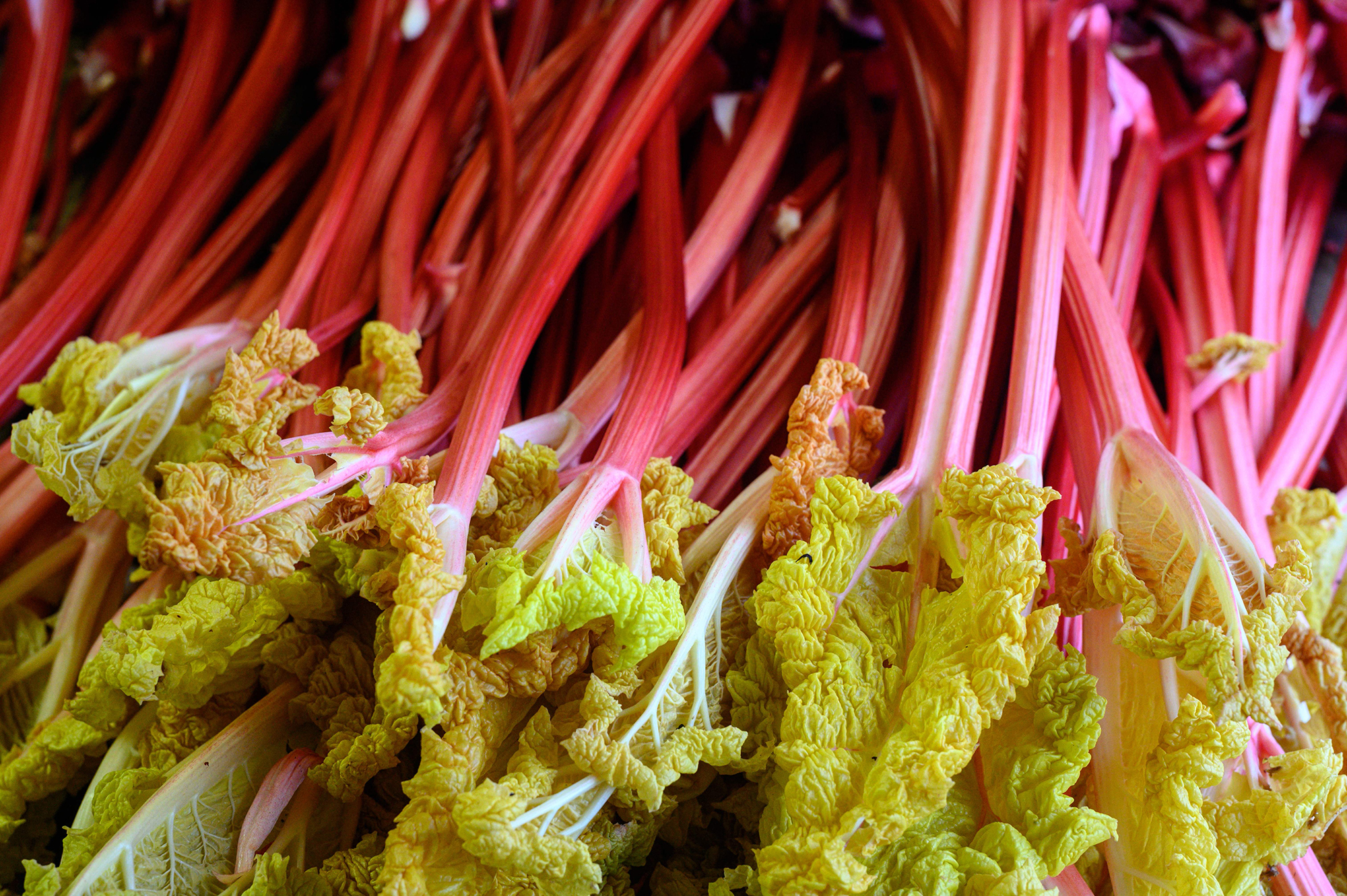When to harvest rhubarb – for the tastiest results
Learning when to harvest rhubarb is the key to enjoying a prolific crop – year after year


Finding out when to harvest rhubarb is essential for a healthy yield and strong parent plant that will keep cropping for years to come.
This gentle giant of the vegetable patch never fails to impress with its majestic leaves that rapidly emerge from the ground each spring. Putting on a dazzling show of pink-red stalks and fuzzy green foliage, it’s a seasonal delight that most keen cooks just can’t wait to savor.
Knowing when to harvest can make a huge difference to both the taste and overall size of the crop. Get it right and one plant – or ‘crown’ can reliably keep producing for up to a decade. Get it wrong and you can severely stress the plant and dramatically shorten its lifespan.
Follow our simple expert guide so you can harvest rhubarb with confidence.
When to harvest rhubarb
It can take time and patience to grow rhubarb, but with its impressive and nutrient-rich stalks that are as pretty as they are tasty, its well worth getting the timing right.
When you plant rhubarb doesn't so much affect harvest timings so much as where you live.
‘The Northern U.S. and Canada are well suited for rhubarb production. In the United States it grows best in the northern states from Maine south to Illinois and west to Washington state,’ say Bill and Jill Hageman, owners of Peaceful Valley Farm and Garden Supply. ‘Once planted, rhubarb plantings remain productive for eight to 15 years. Rhubarb cannot be successfully grown in the southern regions of the United States – the plant needs the cold winter temperatures to grow the following year.’
Design expertise in your inbox – from inspiring decorating ideas and beautiful celebrity homes to practical gardening advice and shopping round-ups.
When can you harvest newly planted rhubarb?
For newly planted crowns it’s well worth heeding these words of advice. Plant expert and cook Sarah Raven says, ‘Don't harvest anything in the first season. Simply allow the sticks of rhubarb to die back in the first autumn. Spread organic compost around the crown in its dormant winter phase.’
The team at Gurneys Seed and Nursery Co. Indiana, established since 1866, add, ‘Two years after planting, you can lightly harvest rhubarb stalks. Harvest stalks in the spring when they are about 12 inches (30cm) long.’
One note of caution though comes from Alabama based wholesalers Bonnie Plants, ‘From the third year on, harvest stems freely. To ensure continued production, take care not to remove more than one-third to one-half the stalks from any one plant during any one harvest. Mature plants typically provide an eight- to 10-week harvest. In general, expect 2 to 3 pounds of stalks per mature plant per season.’
When is the best time to harvest rhubarb?
‘Harvest leafstalks for cooking in the spring to early summer,’ say the experts at Berkeley Horticultural. ‘Grasp stalks near the base and pull sideways and outward (cutting with a knife will leave stubs that decay). Never remove all the leaves from a single plant. Stop harvesting when leafstalks begin to appear slender and remove any blossom stalks.’
This will help the plant or ‘crown’ to replenish its energy before entering its dormant period from fall through late winter.
When is the latest date to pick rhubarb?
Late June or early July tends to be the end of the rhubarb harvest, as this is when stems start to slim so the plant can concentrate building its energy reserves for the following season. After they have been picked, you can consider transplanting rhubarb for a bumper crop the following year.
When to harvest forced rhubarb?
If you are growing forced rhubarb, it will be ready to harvest about eight weeks after covering. As when harvesting rhubarb generally, carefully pull the stems from the base of the crown sideways and outwards to get a clean break, then remove leaves before eating since they are poisonous.

Journalist Jill Morgan has spent over 20 years writing and editing gardening, interior and property features. Titles she has worked on include The English Home, House Beautiful, Ideal Home, Houzz and Modern Gardens and she writes regularly for H&G as a Contributing Editor. Whilst she is a dab hand at renovation projects and DIY, she is happiest when out digging in the garden or planning a new border.